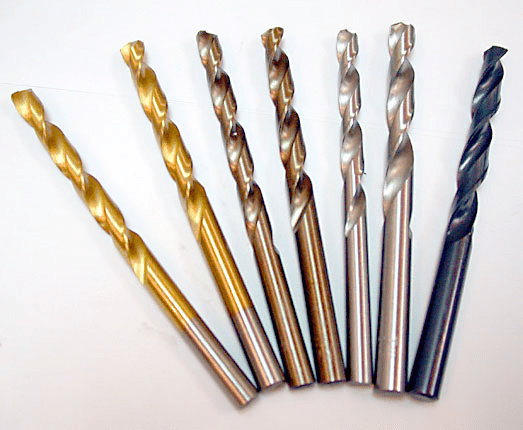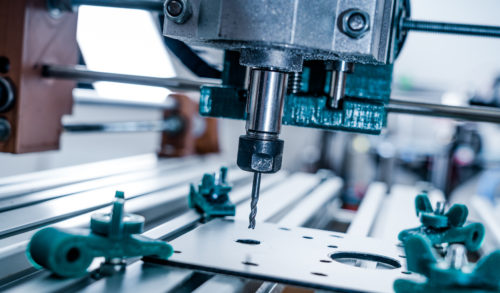Table of Contents
- Freequently Asked Questions
- What is the recommended speed for drilling on a CNC mill?
- What factors affect the speed at which I should drill on a CNC mill?
- What is the best way to determine the optimal drilling speed for my CNC mill?
- What are some common mistakes to avoid when drilling on a CNC mill?
- What are some tips for optimizing the drilling speed on a CNC mill?
- Selecting Correct Speeds and Feeds for Drilling
CNC milling is a precise and efficient way of manufacturing parts, but the speed at which you drill can make a significant difference in the outcome. Proper drilling speed is crucial to achieving a smooth and accurate cut, and going too fast or too slow can result in less than desirable results. In this article, we’ll explore the ideal drilling speeds for CNC milling and why it’s essential to get it right. So, let’s dive in and discover the magic number for drilling on a CNC mill.
When it comes to CNC milling, drilling speed is one of the most critical factors to consider. The right speed can make all the difference in the final product’s quality and accuracy. But, the question is, how fast should you drill on a CNC mill? The answer is not straightforward, and it varies depending on the material you’re working with, the bit’s size, and the machine’s capabilities. In this article, we’ll discuss the factors that affect drilling speed and provide some general guidelines to help you achieve optimal results.
How Fast to Drill on CNC Mill?
When it comes to CNC milling, drilling is one of the most common operations. But the speed at which you drill on a CNC mill can have a big impact on the quality of your results. In this article, we’ll take a look at how to determine the right drilling speed for your CNC mill.
Understanding Cutting Speed
Cutting speed is a critical factor in determining how fast to drill on a CNC mill. Cutting speed is the speed at which the tool is moving across the workpiece, and it’s measured in surface feet per minute (SFM). The cutting speed you use will depend on the material you’re drilling, as well as the type of tool you’re using.
To determine the appropriate cutting speed, you’ll need to consult the tool manufacturer’s recommendations. They will typically provide a range of recommended cutting speeds for different materials and tool types. Keep in mind that the cutting speed will also be affected by the diameter of the tool, with smaller tools requiring higher cutting speeds.
Once you’ve determined the appropriate cutting speed, you’ll need to calculate the RPM (revolutions per minute) at which the spindle should be turning. You can use the following formula to calculate RPM:
RPM = (cutting speed x 4) / tool diameter
Example
Let’s say you’re drilling a 1/4-inch hole in aluminum. The recommended cutting speed for your tool is 300 SFM. Plugging these values into the RPM formula gives us:
RPM = (300 x 4) / 0.25
RPM = 4,800
So in this case, you would need to set your spindle speed to 4,800 RPM.
Factors That Affect Cutting Speed
While the tool manufacturer’s recommendations are a good starting point, there are several factors that can affect the cutting speed you should use when drilling on a CNC mill. Here are a few things to keep in mind:
– Material hardness: Harder materials require lower cutting speeds to avoid damaging the tool or workpiece.
– Tool material: Different materials require different cutting speeds to achieve the best results. For example, carbide tools can withstand higher cutting speeds than HSS (high-speed steel) tools.
– Tool geometry: The shape of the cutting edge on the tool can affect the cutting speed. Tools with more flutes can typically handle higher cutting speeds than tools with fewer flutes.
– Workpiece thickness: Thicker workpieces may require slower cutting speeds to avoid overheating the tool or workpiece.
Benefits of Using the Right Cutting Speed
Using the appropriate cutting speed for your CNC milling operations can have several benefits, including:
– Improved tool life: Using the correct cutting speed can help extend the life of your cutting tools by reducing wear and tear.
– Better surface finish: Cutting at the right speed can help produce a smoother surface finish on your workpiece.
– Faster cycle times: Using higher cutting speeds can help reduce cycle times, which can lead to increased productivity.
Cutting Speed vs. Feed Rate
It’s important to note that cutting speed is different from feed rate. Feed rate is the speed at which the tool is moving into the workpiece, and it’s typically measured in inches per minute (IPM). While cutting speed is often the more critical factor in determining drilling speed, feed rate can also have an impact on your results.
In general, you’ll want to use a lower feed rate when drilling deeper holes or working with harder materials. This can help prevent the tool from overheating or breaking.
Conclusion
Determining the appropriate cutting speed for drilling on a CNC mill can be a bit of a balancing act. You’ll need to consider factors such as material type, tool geometry, and workpiece thickness to ensure that you’re using the right cutting speed for your operation. But with a bit of experimentation and practice, you can find the sweet spot that produces the best results for your specific needs.
Freequently Asked Questions
Here are some frequently asked questions about how fast to drill on a CNC mill:
What is the recommended speed for drilling on a CNC mill?
There is no one-size-fits-all answer to this question, as the recommended speed for drilling on a CNC mill will vary depending on a number of factors. Some of these factors include the type of material you are drilling, the size of the drill bit you are using, and the type of CNC machine you are working with.
That being said, a good rule of thumb is to start with a slower speed for drilling and gradually increase the speed until you find the optimal speed for your particular drilling application. This may require some trial and error, but it is important to take the time to find the right speed in order to achieve the best results.
What factors affect the speed at which I should drill on a CNC mill?
As mentioned above, there are a number of factors that can affect the speed at which you should drill on a CNC mill. Some of these factors include the type and hardness of the material you are drilling, the size and type of the drill bit you are using, the type of CNC machine you are working with, and the depth of the hole you are drilling.
Other factors that can affect the speed at which you should drill on a CNC mill include the coolant you are using, the rigidity of your setup, and the feed rate of your machine. It is important to take all of these factors into consideration when determining the optimal drilling speed for your particular application.
What is the best way to determine the optimal drilling speed for my CNC mill?
The best way to determine the optimal drilling speed for your CNC mill is through trial and error. Start with a slower speed and gradually increase the speed until you find the optimal speed for your particular drilling application.
It is also important to keep track of the variables that affect the drilling speed, such as the material you are drilling and the size of the drill bit you are using. By keeping track of these variables, you can develop a better understanding of how they affect the drilling process and use this knowledge to optimize your drilling speed in the future.
What are some common mistakes to avoid when drilling on a CNC mill?
One common mistake to avoid when drilling on a CNC mill is using the wrong type of drill bit for the material you are drilling. It is important to use a drill bit that is designed for the specific material you are working with, as using the wrong type of drill bit can lead to poor results and even damage to your machine.
Another common mistake to avoid is drilling too quickly or at the wrong speed. As mentioned above, it is important to take the time to find the optimal drilling speed for your particular application. Lastly, it is important to use the proper coolant and lubrication to prevent overheating and ensure the longevity of your machine.
What are some tips for optimizing the drilling speed on a CNC mill?
Some tips for optimizing the drilling speed on a CNC mill include using the correct drill bit for the material you are drilling, using the appropriate coolant and lubrication, and taking the time to find the optimal drilling speed for your particular application.
It is also important to keep your machine well-maintained and to monitor the drilling process closely. By paying attention to the details and taking a methodical approach to drilling on your CNC mill, you can achieve optimal results and prolong the life of your machine.
Selecting Correct Speeds and Feeds for Drilling
In conclusion, the speed at which you should drill on a CNC mill depends on various factors such as the material you are cutting, the size of the drill bit, and the capabilities of your machine. It is crucial to determine the appropriate speed to ensure a clean, precise cut while also minimizing wear and tear on your equipment.
Remember to always refer to the manufacturer’s recommendations for your specific machine and material. Don’t be afraid to experiment with different speeds and settings to find what works best for you.
In the end, drilling on a CNC mill requires patience, precision, and attention to detail. By taking the time to carefully consider your drilling speed, you can achieve the best results and optimize your machining process.
Request a quote today!
[contact-form-7 id="1578" title="Contact form"]
Please compress the file into a ZIP or RAR file before uploading. Alternatively, send through your RFQ by email.
enquires@unitymanufacture.com





